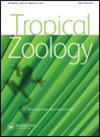Variation in nest morphology, queen oviposition rates, and fungal species present in incipient colonies of the leaf-cutter ant Atta sexdens
IF 0.4
4区 生物学
Q4 ZOOLOGY
引用次数: 2
Abstract
The success of incipient colonies of leaf-cutter ants depends on multiple factors such as temperature, humidity, soil type, the queen’s fertility and vigor, frequency of harmful microfungi, among others. Based on this observation, three factors related to Atta sexdens were characterized: (1) initial nest morphology (depth and volume); (2) queen oviposition rate; and (3) prevalence of Escovopsis (parasitic fungus) and other fungi in incipient colonies. Our observation showed a variation in chamber dimensions and volume, indicating differences in colony development rates. The oviposition rate of queens from nests of the same age showed a difference among queens. About microfungi prevalence, it was found that many are potentially deleterious. In particular, the parasite Escovopsis was present in 16.7% of the colonies. Our study shows positive correlations between queen condition and nest size/fungus garden size. These correlations collectively suggest that ecological factors such as plant availability can generate substantial variation between nests and thus shape the success of incipient colonies.叶蚁Atta sexdens早期群落中巢穴形态、产卵率和真菌种类的变化
切叶蚁早期群落的成功取决于多种因素,如温度、湿度、土壤类型、蚁后的肥力和活力、有害微真菌的频率等。在此基础上,分析了与阿塔性别相关的三个因素:(1)初始巢穴形态(深度和体积);(2) 蜂王产卵率;和(3)Escovopsis(寄生真菌)和其他真菌在初期菌落中的流行率。我们的观察结果显示,腔的尺寸和体积发生了变化,表明菌落发育率存在差异。同一年龄蚁后的产卵率在蚁后之间存在差异。关于微真菌的流行,人们发现许多是潜在的有害物质。特别是,寄生虫Escovopsis存在于16.7%的菌落中。我们的研究表明,蚁后状况与巢穴大小/真菌园大小呈正相关。这些相关性共同表明,植物可用性等生态因素可以在巢穴之间产生实质性的变化,从而影响早期群落的成功。
本文章由计算机程序翻译,如有差异,请以英文原文为准。
求助全文
约1分钟内获得全文
求助全文
来源期刊

Tropical Zoology
生物-动物学
CiteScore
2.50
自引率
0.00%
发文量
1
审稿时长
>12 weeks
期刊介绍:
Tropical Zoology is an international zoological journal publishing original papers in the field of systematics, biogeography, phylogeny, ecology and conservation of all terrestrial and aquatic animal Phyla from tropical and subtropical areas.
Only papers with new information, high quality and broad interest are considered. Single species description and checklists are not normally accepted. Review papers are welcome. The journal is owned by the Istituto di Ricerca sugli Ecosistemi Terrestri of the Consiglio Nazionale delle Ricerche, Florence, Italy (CNR-IRET) who performs research into the structure and functioning of aquatic and terrestrial ecosystems, focusing in particular on anthropogenic pressure and global change. The knowledge amassed forms the scientific basis for identifying the most appropriate protective and corrective interventions, and provides support for the bodies entrusted with formulating policies for environmental protection and recovery.
 求助内容:
求助内容: 应助结果提醒方式:
应助结果提醒方式:


